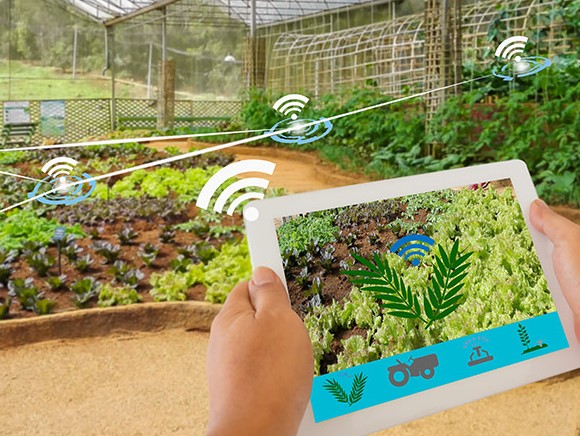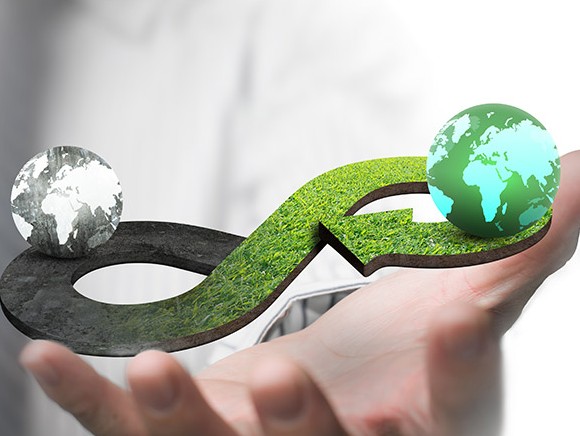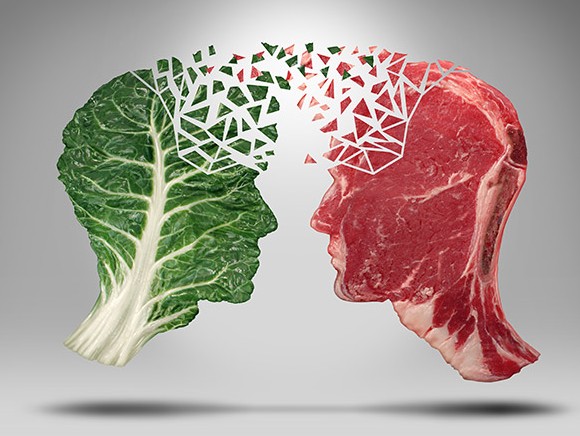
Today, society takes a more critical view of food manufacturing companies than ever before. Most election manifestos not only underline the importance of a food policy, but also believe that the policy should be closely linked to sustainability. So what must change? Which solutions are there? And where are the opportunities and potential pitfalls?
In late 2016, countless reports and studies were published crammed with analysis of the current situation, ambitions and recommendations about ‘our food’. From political parties and consumer associations to knowledge institutes – everyone has their own opinion nowadays. But the fact that the topic of sustainability is alive and kicking was also illustrated by the high turnout for the ‘New Year’s Debate on Food’ held in early January at the Nieuwspoort press centre in The Hague. The venue was almost at bursting point with representatives from Dutch ministries, the private sector and politics. In fact, the majority of Dutch political parties are even in favour of the formation of a new ‘Ministry of Food’.
The large majority of people in politics, industry and academia agree that things have to change. There is an urgent need for a different approach to food production. In the space of just one generation, the world population is expected to grow by over two billion people. Meanwhile global prosperity is rising, people are increasingly moving from rural areas to cities, and the spread of urbanisation is continuing. The result, quite simply, is that more food is required, yet we also need to utilise raw materials and energy more carefully. People are looking for new food sources, for healthier alternatives, for solutions to tackle waste – the topic of sustainability is relevant in literally every aspect of food production.
The ‘Sustainable Food Monitor 2015’ (published on 15-11-2016) shows that Dutch consumer spending on sustainable food has risen yet again, amounting to almost EUR3 billion in 2015. That is an increase of 12% compared with 2014, while the total spend on food increased by ‘just’ 5% in the same period. As a result, sustainable food accounted for an 8% share of the total food spend in the Netherlands in 2015. It is becoming increasingly common for Dutch people, not only as citizens but also as consumers, to choose food that has been produced in a sustainable manner – so there is public support.
The majority of the participants and attendees at the ‘New Year’s Debate on Food’ firmly believed in the significant opportunities for the Dutch agri-food sector as it moves towards climate-neutral and circular production. The debate participants were in unanimous agreement that this could make the sector one of the most competitive in the world. The discussion centred mainly on the time frame for the transition. Some regarded within ten years as being feasible, while others called 20 years more realistic. “Ten years sounds ambitious,” said Martin Scholten from Wageningen UR, “but it is realistic and also necessary. The Dutch sector is innovative enough.” According to the politicians, the government must invest billions to facilitate the transition, just as it is currently doing in the transition to sustainable energy.
On 21 November 2016 Martijn van Dam and Edith Schippers provided an overview of what has been achieved since the publication of the ‘Food agenda for safe, healthy and sustainable food’ (published in October 2015). The Food Agenda formulated numerous goals that the Dutch agricultural sector, food industry and knowledge institutions will have to achieve in order to stay at the forefront of the development of healthy and sustainable food. Van Dam and Schippers concluded that a lot has been done in the past year. In the context of healthy food, for example, during its presidency of the EU the Netherlands gave priority to reducing sugar, salt and (saturated) fats in food and got the European ball rolling in the right direction. The Netherlands Nutrition Centre Foundation (Voedingscentrum) has launched a new ‘Wheel of Five’ to help consumers to make healthier food choices. And the Dutch Alliance for Sustainable Food and the Dutch Ministry of Economic Affairs commissioned a study related to the topic of chain transparency revolving around the question of how companies can provide consumers with even better information about product composition, country of origin and certification. From labelling to digital product information and from quality marks to websites or apps – everything was considered. The study explored how existing flows of information in the food chain can be improved and what else is necessary. Click here for a summary of the report titled Een reis door de keten (‘A journey through the chain’) (published on 8-12-2016, in Dutch only) including the key analysis and recommendations.
At the end of 2015, 193 countries reached agreement on the UN’s 17 Sustainable Development Goals to be achieved by 2030. And in April 2016 the EU countries signed the Paris Agreement on climate change. This agreement to reduce greenhouse gas emissions also places considerable demands on all the links in the food chain, from farmer to consumer. In the Netherlands, it is proposed that sectors for which the emissions trading scheme does not apply – and these include agriculture, transport and light industry – must reduce their total emissions by 36% before 2030.
Statistics Netherlands (CBS) investigated the Netherlands’ position with respect to the 17 Sustainable Development Goals and published its findings in November 2016. According to CBS, the Netherlands is generally performing well. Nevertheless, the country has reached an impasse on certain points or is lagging behind other countries in terms of certain goals. The focus areas are sustainable agriculture, CO2 emissions (the Netherlands is number one for phosphate emissions), the circular economy, poverty and gender equality.
In a circular economy, the economy is still able to grow even though the use of raw materials – and hence the size of the associated environmental footprint – is reduced. In September 2016 the government launched the government-wide programme called Circulaire Economie – Nederland circulair in 2050 (‘Circular Economy – making the Netherlands circular by 2050’). The programme is aimed at using 50 percent fewer new raw materials (minerals, fossil fuels and metals) by 2030 and at being completely circular by 2050. The report details the initiatives that have been set up in terms of improving the sustainability of supply chains, regional crop production, protein transition, closed (nutrient) cycles and the optimal use of residual or waste flows.
The value of nature and all the benefits nature provides to man is also captured in the metaphor of ‘natural capital’. This term applies to all the natural resources present on Earth that can be of service for many years to come, provided they are used sustainably – e.g. water purification, natural pest protection, plant pollination and carbon sequestration. The study titled Ondernemen met natuurlijk kapitaal in de voedselsector (‘Doing business with natural capital in the food sector’) (by Lienen, F. van, Egmond, P. van & Veldhuis, C.) that was published at the end of 2016 revolves around the question of how entrepreneurs in the food sector can treat natural capital sustainably while also running a profitable business. How can they make sustainably produced food affordable? When is the revenue model economically feasible? Can their best practices be scaled up without compromising on sustainability or profitability? The entrepreneurs in the case study make it clear that it is possible to do business using natural capital by setting themselves apart in terms of food quality. They challenge the market leaders in the food system to keep innovating and improving, and they call for the government to support these entrepreneurs.
The recently published book called Briljante businessmodellen in food (‘Brilliant business models in food’) covers the same issues and dilemmas. The book contains 20 cases of organisations that demonstrate how they make healthy and sustainable food both affordable and scalable. Click here to read about two of the cases in more detail.
In addition to the circular economy, another top priority for the Dutch government is the protection of public health. That’s why, besides an ongoing focus on food safety, the cabinet continues to work on measures to achieve a healthier product offering and “to offer consumers opportunities to make the healthy/healthier choice”. In the Actieplan etikettering van levensmiddelen(‘Action Plan for Food Labelling’) (published on 4 October 2016) the Dutch Minister of Public Health, Welfare and Sport reiterated that clear regulations, correct compliance and strict enforcement are essential in this. “After all, the consumer wants to know what he is buying and what he is eating. The information must be correct and not misleading”. The Minister of Public Health, Welfare and Sport also announced the development of a food app containing information about product composition and nutritional value. This app will enable consumers to make their own (healthier) food choices (e.g. with respect to salt, fats, sugar or allergens).

How nutritious are proteins obtained from sustainable sources? That question is at the heart of the Public-Private Partnership (PPP) on Sustainable Future Proteins: focus on nutritional and health-promoting qualities. “If we want to feed all the mouths around the world, then we will need to move towards a diet including sustainably produced protein obtained from plant-based sources and residual flows,” says Marloes Groenewegen, Programme Manager Healthy and Tasty Food at Wageningen Food & Biobased Research. “The question is, to what extent can we develop sustainable alternatives alongside the animal protein in our food without compromising on the nutritional value?” So far, little is known about the nutritional value of such protein replacements apart from their energy value and amino acid composition. This study provides insight into the digestibility of a number of sustainable sources of protein such as peas, potatoes, animal plasma, edible moulds and insects.

The study, coordinated by Wageningen University & Research, forms a scientific basis for the development of high-quality foodstuffs with sustainably produced protein and provides a toolbox which enables manufacturers to quickly and efficiently assess the nutritional value, digestibility and biological activity of new proteins. “Existing methods for measuring the digestibility and biological activity are laborious and time-consuming, and they often also require animal testing. We are developing a user-friendly and animal-friendly alternative,” says Harry Wichers, professor of immune modulation at Wageningen University & Research and scientific coordinator of the project. This multi-year PPP, with co-funding form the Dutch Top Sector Agri&Food, will run until 2020. The consortium is open to hearing from new partners who can contribute supplementary proteins, knowledge or expertise.
___________________________
Lienen, F. van, Egmond, P. van & Veldhuis, C. (2016), Ondernemen met natuurlijk kapitaal in de voedselsector, The Hague: Planbureau voor de Leefomgeving.
Actieplan etikettering van levensmiddelen, Dutch government
Circulaire Economie, Dutch government
Meten van SDGs: een eerste beeld voor Nederland, CBS
Letter to Dutch parliament about the food agenda for safe, healthy and sustainable food
Letter to Dutch parliament about the progress of the food agenda for safe, healthy and sustainable food
Sustainable Food Monitor 2015
Briljante businessmodellen in food
Source: Foto tablet: ©Montri Nipitvittaya/Shutterstock.com, foto oneindigheid teken: ©BsWei/Shutterstock.com, foto hoofden: ©Lightspring/Shutterstock.com